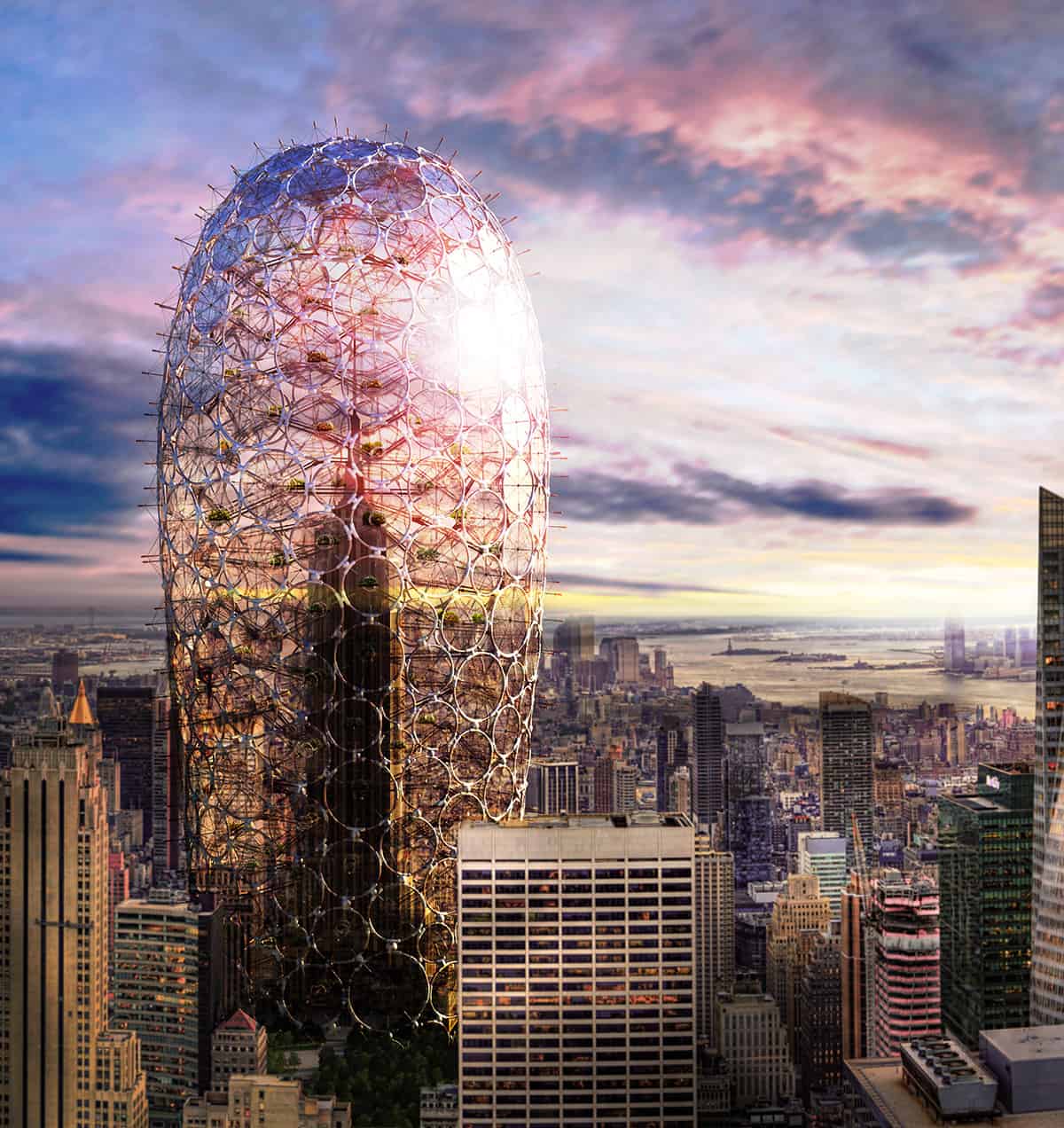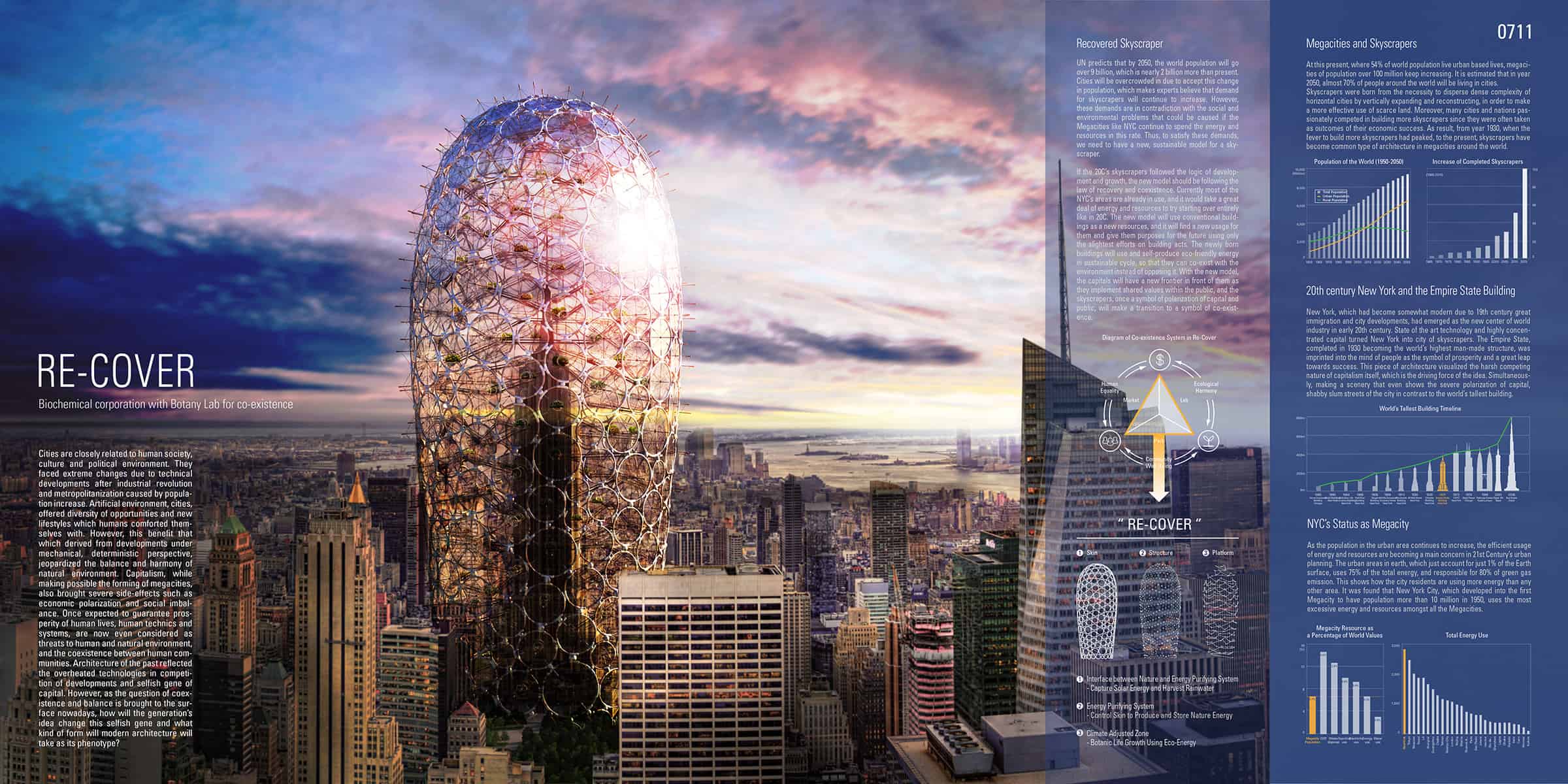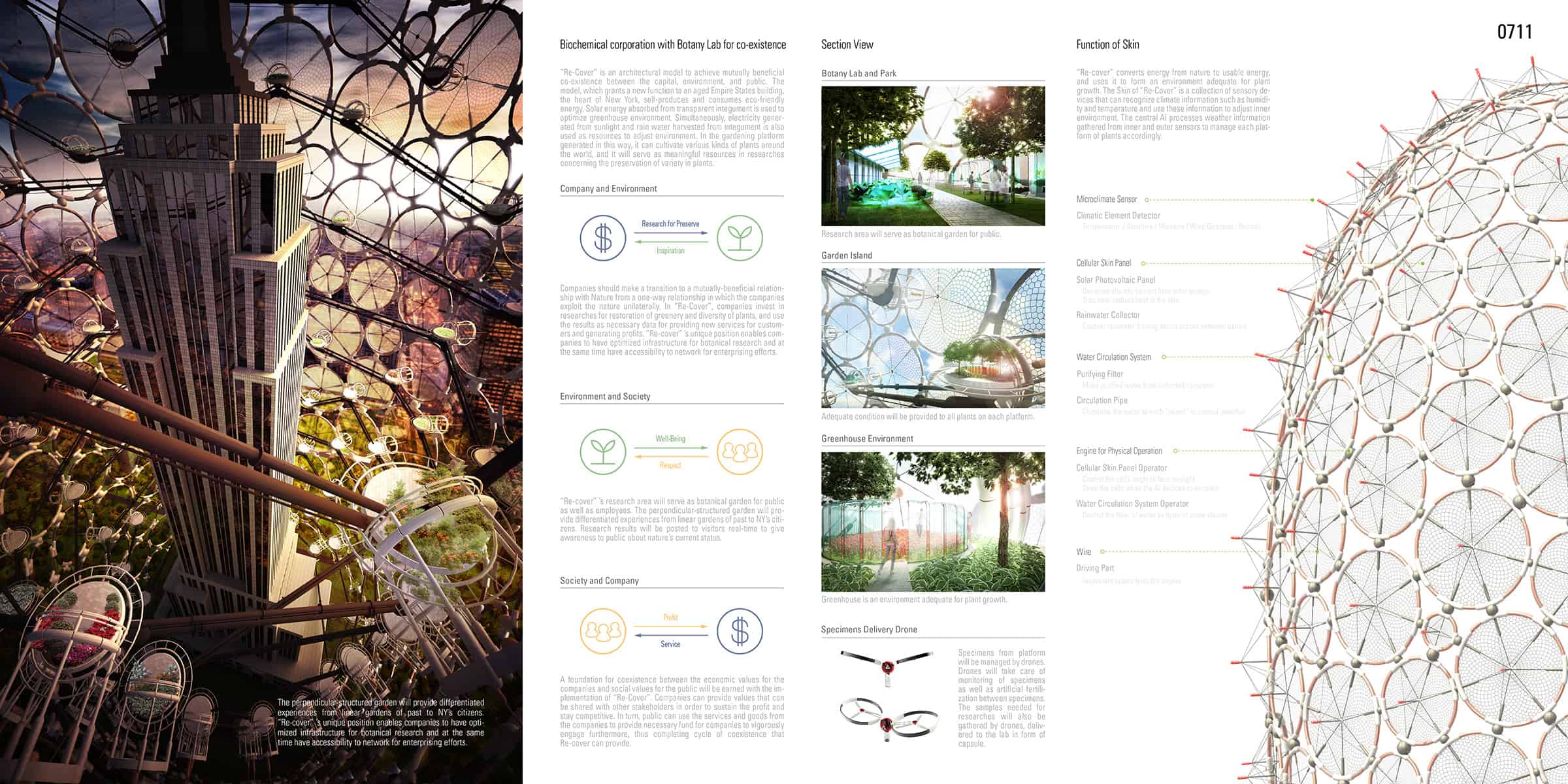Honorable Mention
2016 Skyscraper Competition
Soomin Kim, Seo-Hyun Oh
South Korea

Modern cities have faced extreme changes due to developments of the Industrial Revolution and the urban sprawl caused by population increase. Artificial environment, cities, offered diversity of opportunities and new lifestyles which humans comforted with. However, this benefit jeopardized the balance and harmony of natural environment. Capitalism, while making possible these megacities, also brought severe side effects such as economic polarization and social imbalance. Once expected to guarantee prosperity of human lives, technics and systems, are now even considered as threats to the coexistence between human and natural environment, and human communities.
Architecture of the past reflected the overheated technologies in competition of developments and selfish gain of capital. However, as the question of coexistence and balance is brought to the surface nowadays, how will the generation’s idea change this selfish gain and what kind of form will modern architecture will take as its phenotype? Today, 54% of the world population live urban based lives, megacities of population over 10 million keep increasing. Skyscrapers were born from the necessity to disperse dense complexity of horizontal cities by vertically expanding and reconstructing, in order to make a more effective use of scarce land. Moreover, many cities passionately competed in building more skyscrapers since they were often taken as outcomes of their economic success.
State of the art technology and highly concentrated capital turned New York into city of skyscrapers. The Empire State, completed in 1930 becoming the world’s highest man-made structure, was imprinted into the mind of people as the symbol of prosperity and a great leap towards success. This piece of architecture visualized the harsh competing nature of capitalism itself, which is the driving force of the idea. Simultaneously, making scenery that even shows the severe polarization of capital, shabby slum streets of the city in contrast to the world’s tallest building.
The urban areas in earth, which just account for just 1% of the Earth surface, uses 75% of the total energy, and responsible for 80% of green gas emission. It was found that NYC, which developed into the first megacity to have population more than 10 million in 1950, uses the most excessive energy and resources amongst all the megacities. UN predicts that by 2050, the world population will go over 9 billion. Cities will be overcrowded in due to accept this change in population, which makes experts believe that demand for skyscrapers will continue to increase. However, these demands are in contradiction with the social and environmental problems that could be caused if the megacities like NYC continue to spend energy and resources at this rate. Thus, to satisfy these demands, we need to have a sustainable model for a skyscraper.
If skyscrapers in the 20th Century followed the logic of development and growth, the new model should be following the law of recovery and coexistence. Currently most of the NYC’s areas are already in use, and it would take a great deal of energy and resources to try starting over entirely. The model will use conventional buildings as resources, and it will find a new usage for them and give them purposes for the future using only the slightest efforts on building acts. The newly born buildings will use and self-produce eco-friendly energy in sustainable cycle, so that they can co-exist with the environment instead of opposing it. With the model, the capitals will have a new frontier in front of them as they implement shared values within the public, and the skyscrapers, once a symbol of polarization of capital and public, will make a transition to a symbol of co-existence.


This work is licensed under a Creative Commons License permitting non-commercial sharing with attribution. https://creativecommons.org/licenses/by-nc-nd/4.0/



